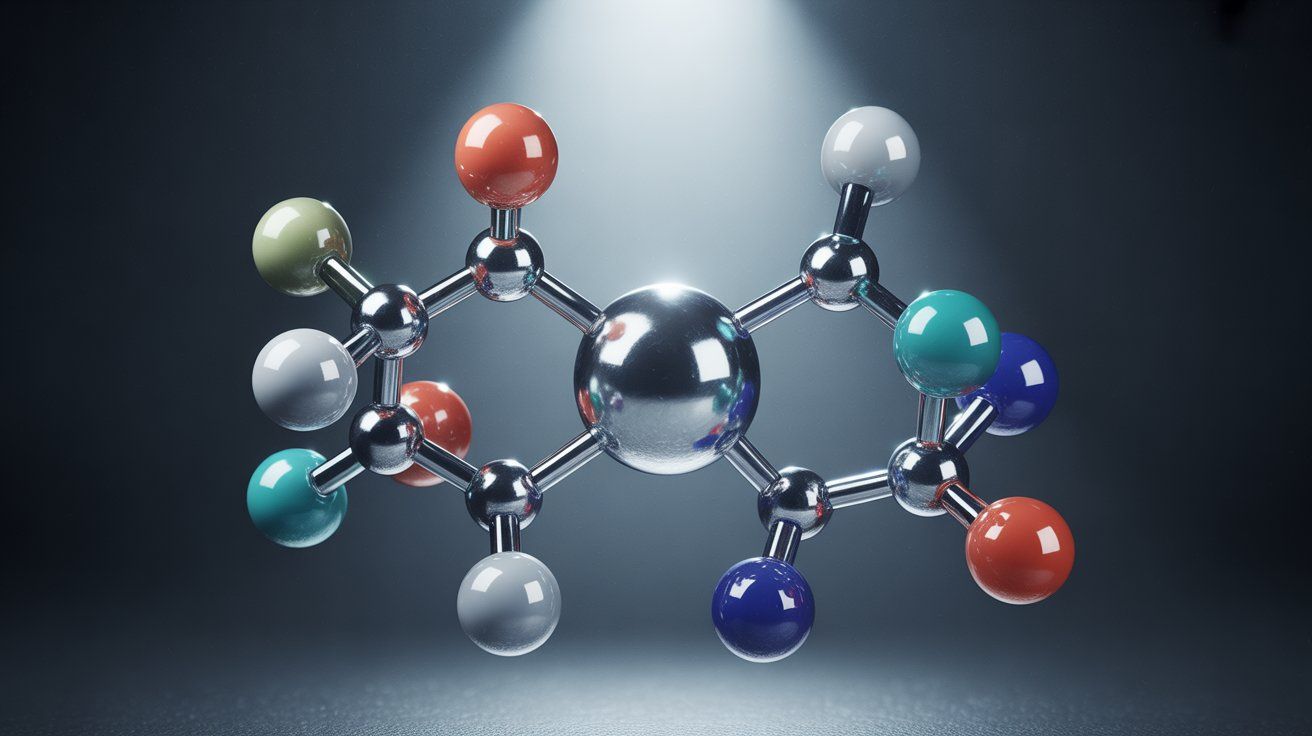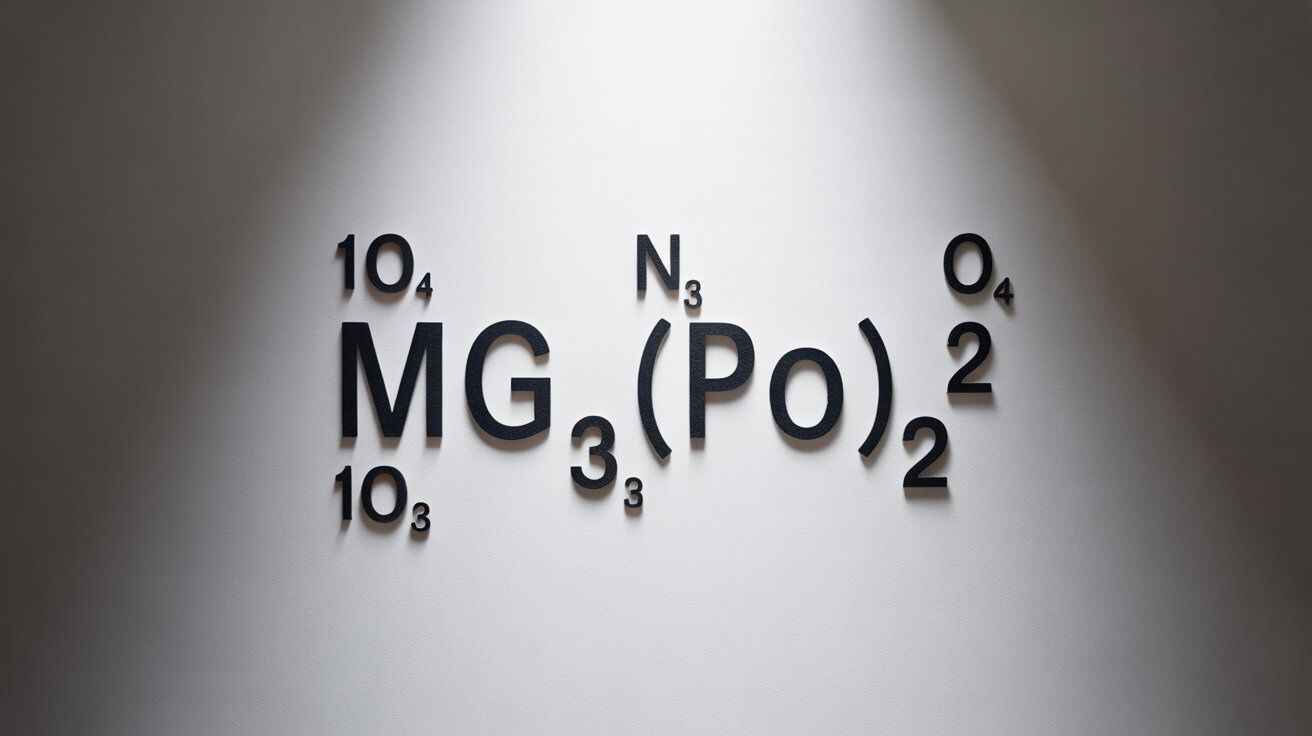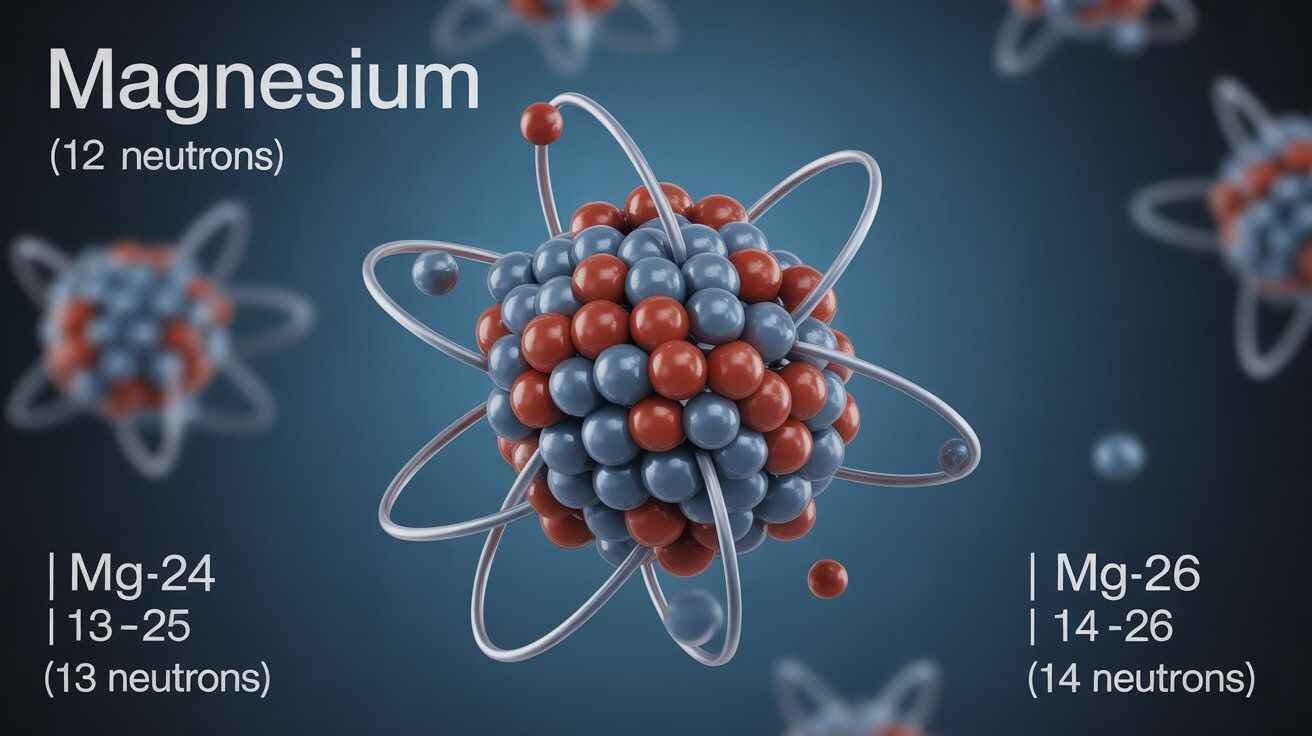Magnesium glycinate molar mass is ≈172.42 g/mol, crucial for accurate dosing, supplement formulation, lab calculations, and elemental magnesium analysis.
Magnesium glycinate molar mass
The magnesium glycinate molar mass defines the total molecular weight of this chelated magnesium compound, crucial in chemistry and nutritional formulation.
Derived from the molecular formula C₄H₈MgN₂O₄, it equals about 172.42 g/mol. Understanding this value ensures accurate supplement dosing, precise laboratory analysis, and consistency in magnesium bisglycinate formulations, supporting both scientific and industrial accuracy.
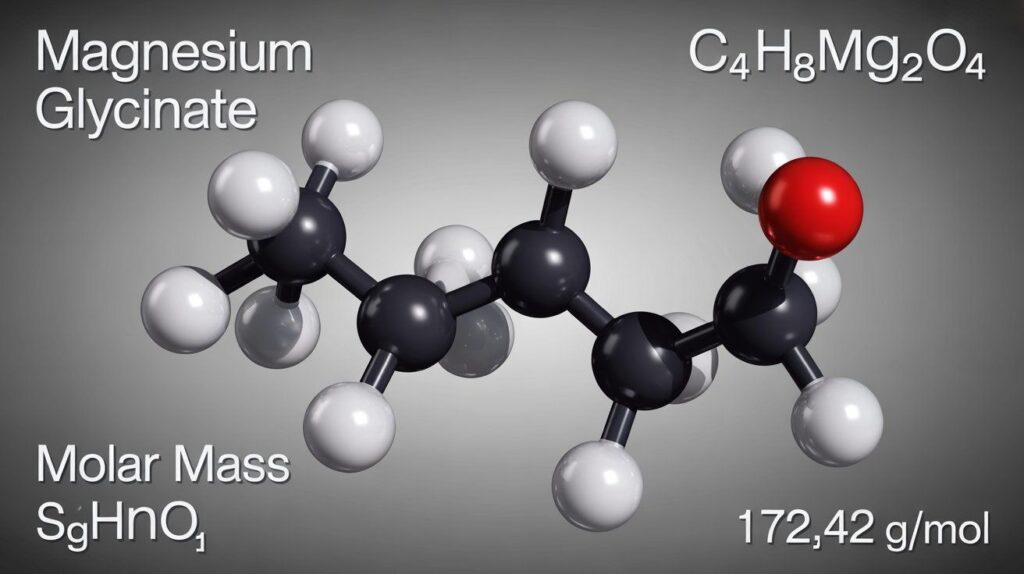
What Is Magnesium Glycinate?
Magnesium glycinate—also called magnesium bisglycinate—is a chelated compound formed when magnesium binds with two glycine molecules.
This structure enhances absorption and bioavailability, making it a preferred form in supplements and medical research.
With its stable molecular formula C₄H₈MgN₂O₄, it’s valued for providing elemental magnesium in a gentle, highly absorbable form, supporting muscle, nerve, and overall biochemical functions.
Chemical Formula and Structural Composition
The chemical formula of magnesium glycinate is C₄H₈MgN₂O₄, representing four carbon, eight hydrogen, two nitrogen, four oxygen atoms, and one magnesium atom. In this chelated structure, magnesium ion binds with two glycine molecules, forming a stable magnesium bisglycinate complex.
This coordination enhances molecular stability and influences its molar mass of approximately 172.42 g/mol, vital for accurate chemical and supplement formulations.
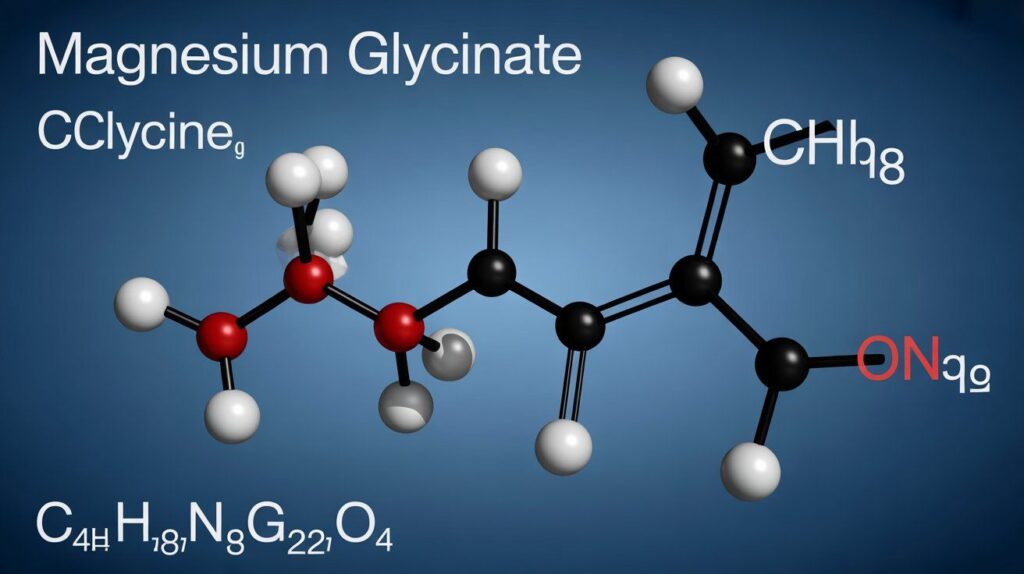
How to Calculate Magnesium Glycinate Molar Mass
To determine the magnesium glycinate molar mass, add the atomic weights of all atoms in its formula C₄H₈MgN₂O₄.
Multiply each element’s atomic mass by its atom count—carbon, hydrogen, nitrogen, oxygen, and magnesium—then total the values.
The result equals approximately 172.42 g/mol. This precise molecular weight calculation ensures accuracy in stoichiometry, supplement formulation, and laboratory analysis.
Step-by-Step Elemental Breakdown
| Element | Number of Atoms | Atomic Weight (g/mol) | Contribution to Mass (g/mol) |
|---|---|---|---|
| Carbon (C) | 4 | 12.011 | 48.044 |
| Hydrogen (H) | 8 | 1.008 | 8.064 |
| Magnesium (Mg) | 1 | 24.305 | 24.305 |
| Nitrogen (N) | 2 | 14.007 | 28.014 |
| Oxygen (O) | 4 | 15.999 | 63.996 |
Magnesium Percentage and Derived Metrics
The elemental magnesium percentage in magnesium glycinate is calculated as (24.305 ÷ 172.42) × 100 ≈ 14.1%.
Knowing this magnesium content is critical for accurate supplement dosing and nutritional labeling. It also helps in stoichiometry and chemical analysis when working with chelated magnesium compounds.
Tracking derived metrics ensures consistent quality, precise formulation, and reliable biochemical calculations in research or product development.
Monoisotopic vs Average Mass
The monoisotopic mass of magnesium glycinate uses the most abundant isotopes, approximately 172.033 u, while the average molar mass considers the natural isotopic distribution, giving ≈172.42 g/mol.
Understanding this distinction is important in mass spectrometry, analytical chemistry, and precise supplement formulation. Choosing the correct mass type ensures accurate molecular weight calculations and reliable results in stoichiometric and laboratory applications.
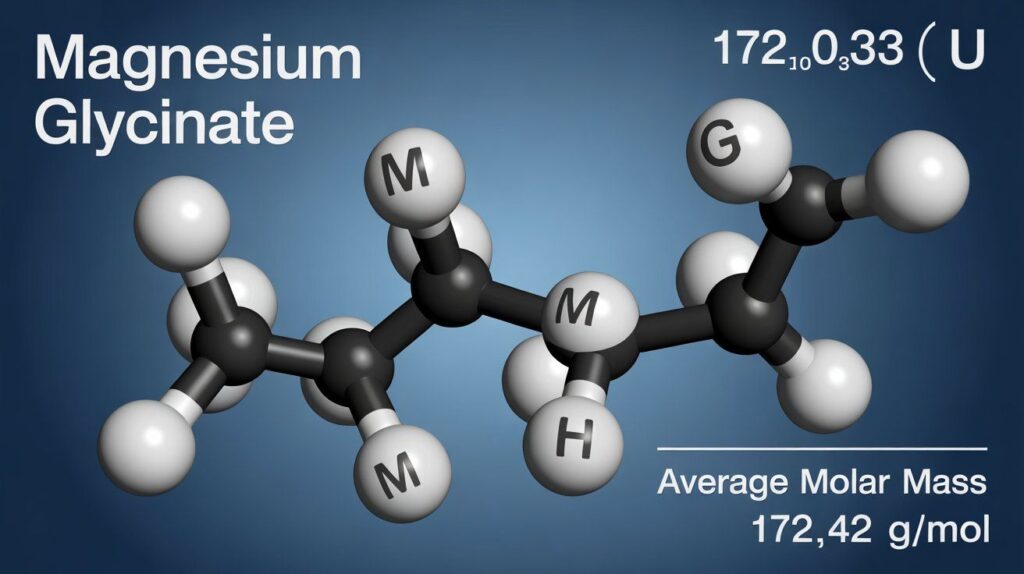
FAQs
Q1. What is the molar mass of magnesium glycinate?
The magnesium glycinate molar mass is approximately 172.42 g/mol, based on its molecular formula C₄H₈MgN₂O₄.
Q2. How is the molar mass calculated?
Add the atomic weights of all atoms in magnesium glycinate: carbon, hydrogen, nitrogen, oxygen, and magnesium. Multiply each by the number of atoms, then sum the totals.
Q3. What percentage of magnesium is in magnesium glycinate?
Elemental magnesium makes up about 14.1% of the total mass, which is important for accurate supplement dosing and nutritional labeling.
Q4. Is magnesium bisglycinate the same as magnesium glycinate?
Yes. Both refer to the same chelated magnesium compound, with two glycine molecules coordinating to one magnesium ion.
Q5. Why is knowing the molar mass important?
Understanding the magnesium glycinate molecular weight is essential for stoichiometry, lab calculations, supplement formulation, and comparing different magnesium forms like oxide or citrate.

Hamid Raza, aged 65, is a seasoned expert in nutrition, health supplements, and wellness, with over four decades of experience researching and educating people about essential minerals like magnesium. His work focuses on helping individuals improve energy, bone health, muscle function, and overall wellness through scientifically-backed magnesium knowledge.
Throughout his career, Hamid has contributed to numerous health articles, research studies, and wellness blogs, making complex nutritional science accessible to everyday readers. Passionate about natural health solutions, he guides readers on choosing the right magnesium supplements for optimal health.

